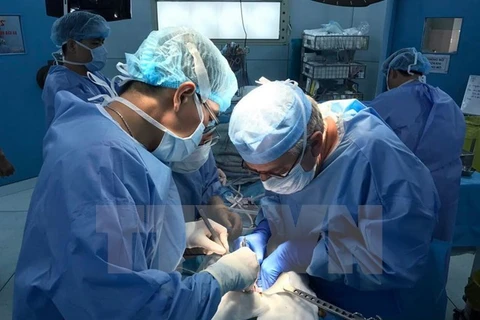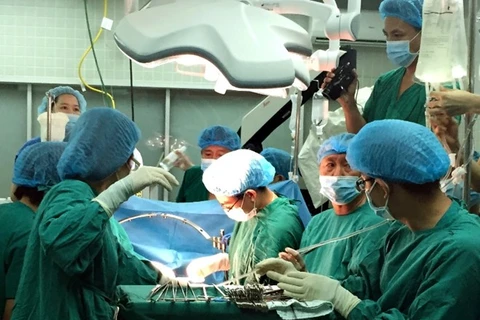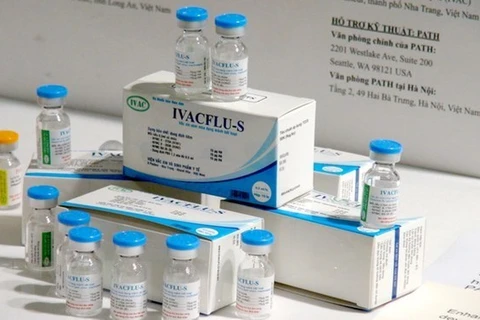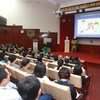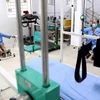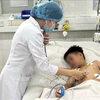 A child aged eight receives liver transplant at the Vietnam – Germany Hospital. (Photo: VietnamPlus)
A child aged eight receives liver transplant at the Vietnam – Germany Hospital. (Photo: VietnamPlus)
Hanoi (VNA) – For the first time in Vietnam, doctors at the have successfully performed a split liver transplant, dividing a donor’s liver and transplanting it to an adult and a child patient, according to the hospital’s director Prof. Tran Binh Giang.
Assoc. Prof. Doctor Nguyen Quang Nghia, head of the hospital’s Organ Transplant Centre, said a 30-year-old man from Hanoi’s Chuong My district had suffered severe traumatic brain injury and was declared brain-dead after being rushed to hospital.
His family then decided to donate his organs which were transplanted into five patients, including two kidney, two liver and one heart recipients. In addition, blood vessels had been sent to a tissue preservation bank for other patients, he said.
Nghia noted that the most complex aspect of the liver transplant was that medical staff had to split the donor’s liver and then transplant it into one child aged eight who was suffering liver failure - hepatic coma due to decompensated cirrhosis, as well as copper metabolism disorder and congenital biliary atresia, and a 49-year-old male adult with liver cancer.
 Assoc. Prof. Doctor Nguyen Quang Nghia, head of the Vietnam – Germany Hospital’s Organ Transplant Centre. (Photo courtesy of the hospital)
Assoc. Prof. Doctor Nguyen Quang Nghia, head of the Vietnam – Germany Hospital’s Organ Transplant Centre. (Photo courtesy of the hospital)
A simultaneous division and transplant surgery was performed for over 16 hours, with joint work by leading experts from multiple specialties.
Six days after the transplants, all the five patients recovered well. The two with liver transplant are fully awake and able to breathe effectively with livers functioning well.
Prof. Giang said the success of the split liver transplant affirmed the expertise of local medical staff and offered a new opportunity for patients waiting for liver transplants.
The transplants are very special, he said, because with a donated liver, doctors used to be able to save only one patient, but now they can save more lives.
Doctor Nguyen Pham Anh Hoa, head of the National Hospital of Paediatrics’s Hepatology Department, said the success of the split liver transplant is giving children with serious illnesses, especially those with biliary atresia, a second chance of life.
In the past, the main source of donated livers for these children used to be from living family members and the chance to get transplants was very little, she said.
At the National Hospital of Paediatrics’s Hepatology Department, about 20 children die every year because they cannot wait long enough for their chance to come, she added.
“This new technique being successfully performed will be a big opportunity for them,” Hoa said.
The first split liver transplant was carried out in 1988 but it is very difficult due to the lack of understanding on the anatomy of the donor liver before dividing, while the transplant for two patients at the same time also requires huge technical crews that can perform the liver transplant in emergency conditions with complex techniques.
The first adult liver transplant was successfully performed at the Vietnam – German Hospital on November 28, 2007. On April 15, 2010, the hospital also successfully carried out the first liver transplant from a brain-dead donor.
The Vietnam – German Hospital is now capable of performing most of the liver transplant techniques – transplant of whole liver or reduced liver from brain-dead donor, and transplant of partial liver from living donor.
So far, the hospital has successfully conducted 62 liver transplants, accounting for more than half of the country’s total.
The biggest challenge of liver transplants is the limited donation which can meet only about 10 – 15 percent of the demand./

